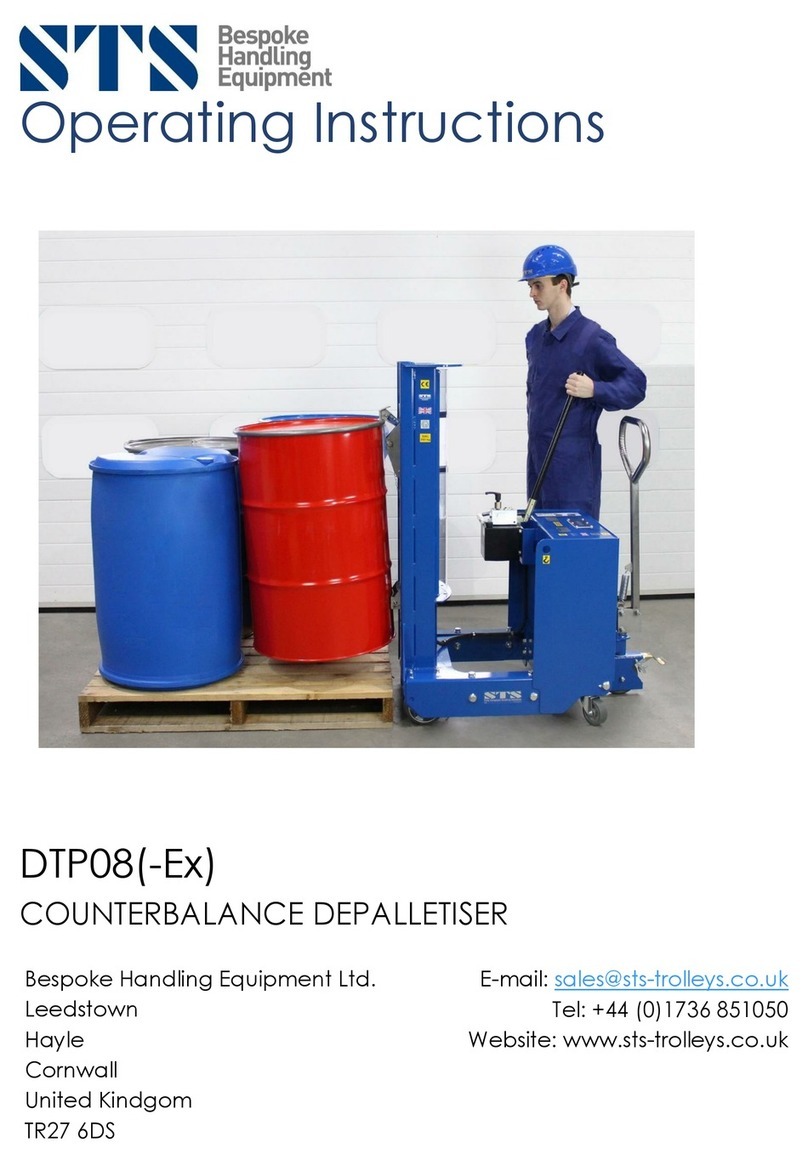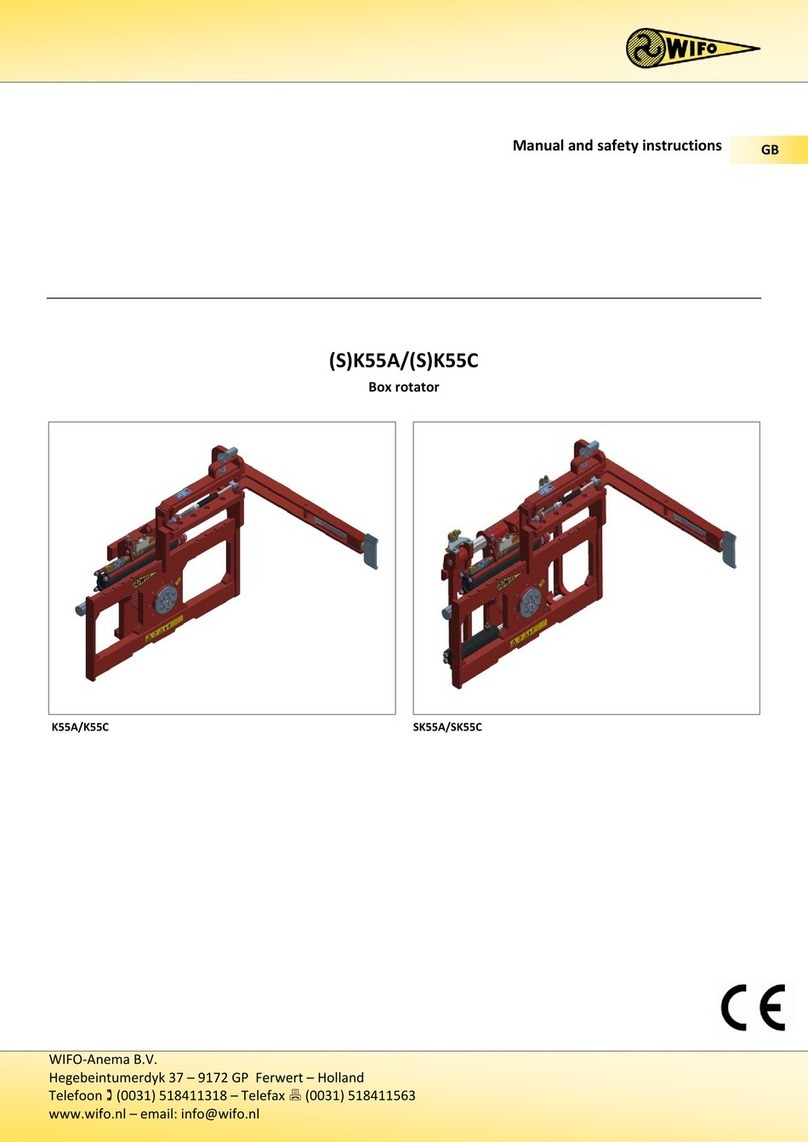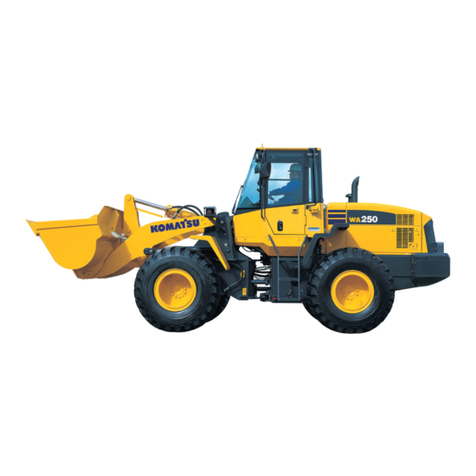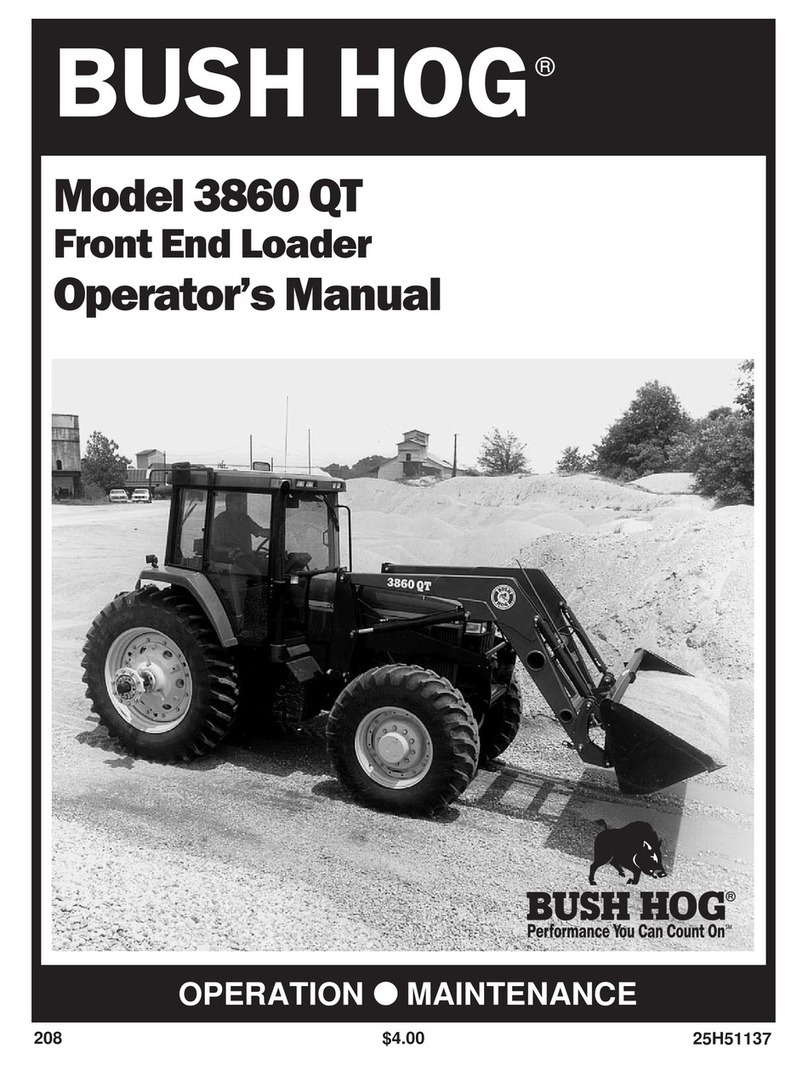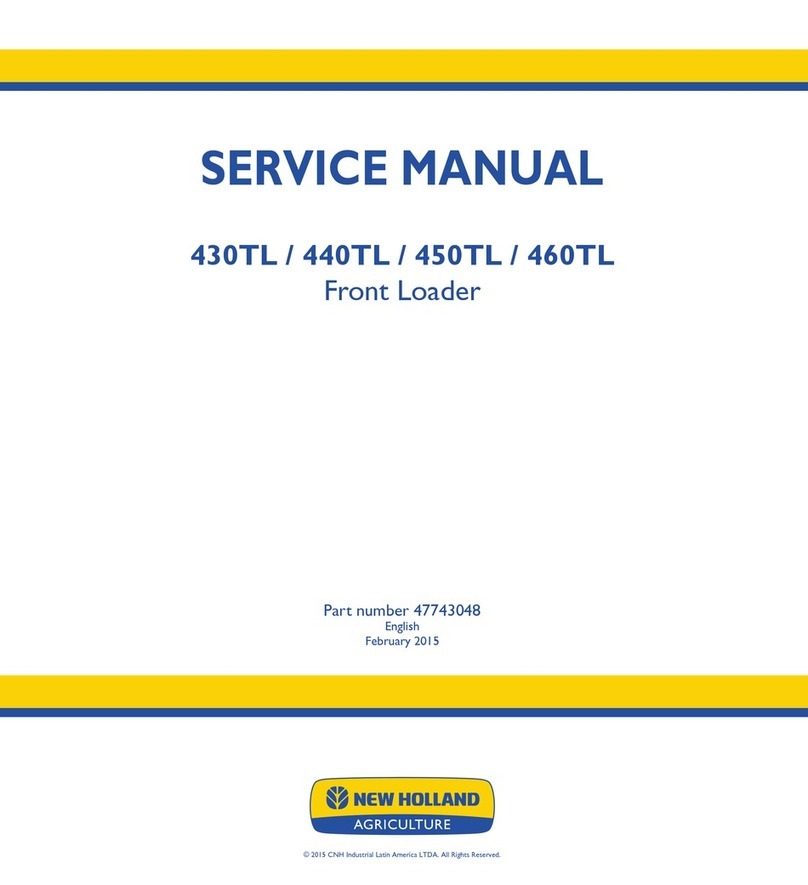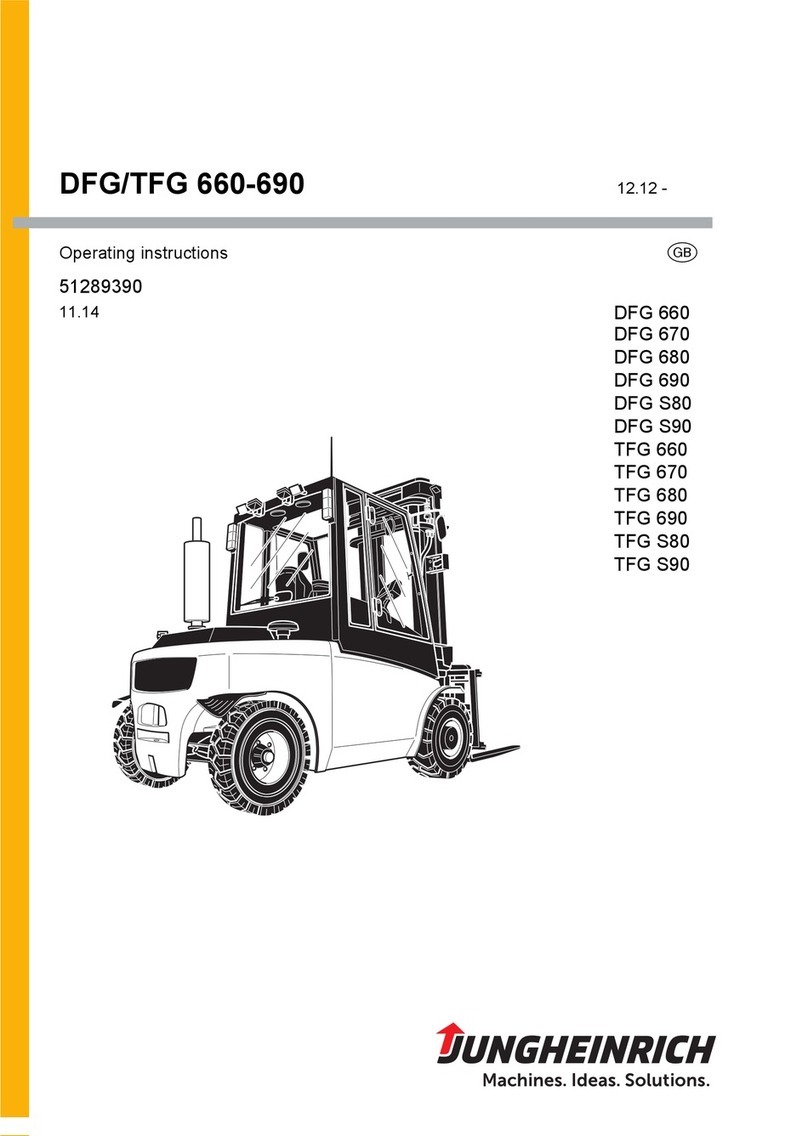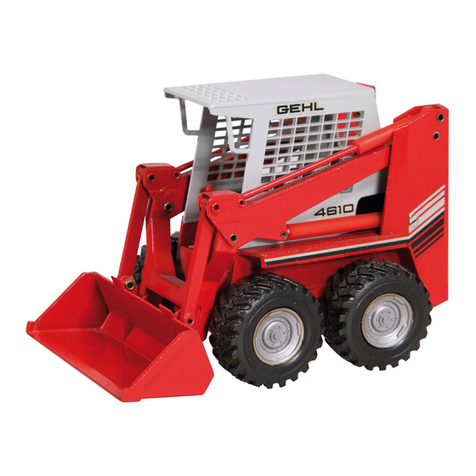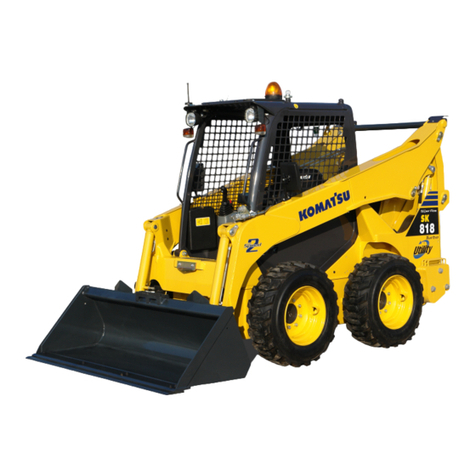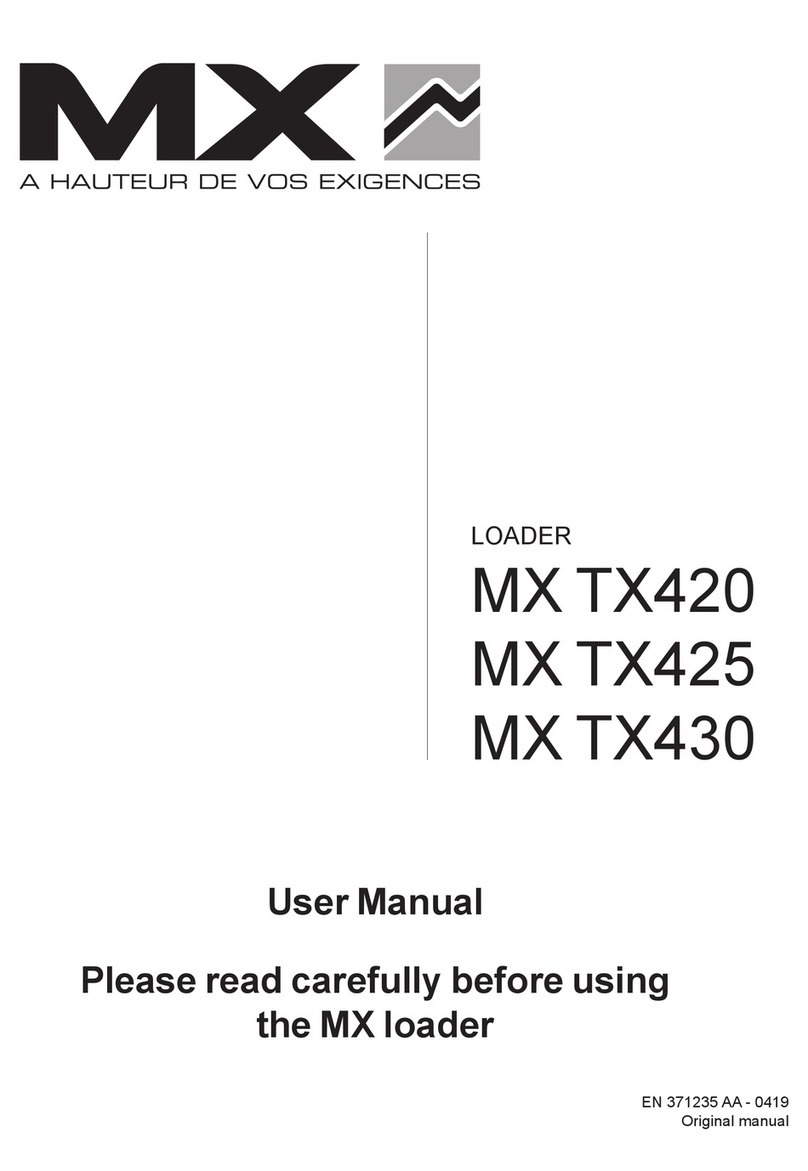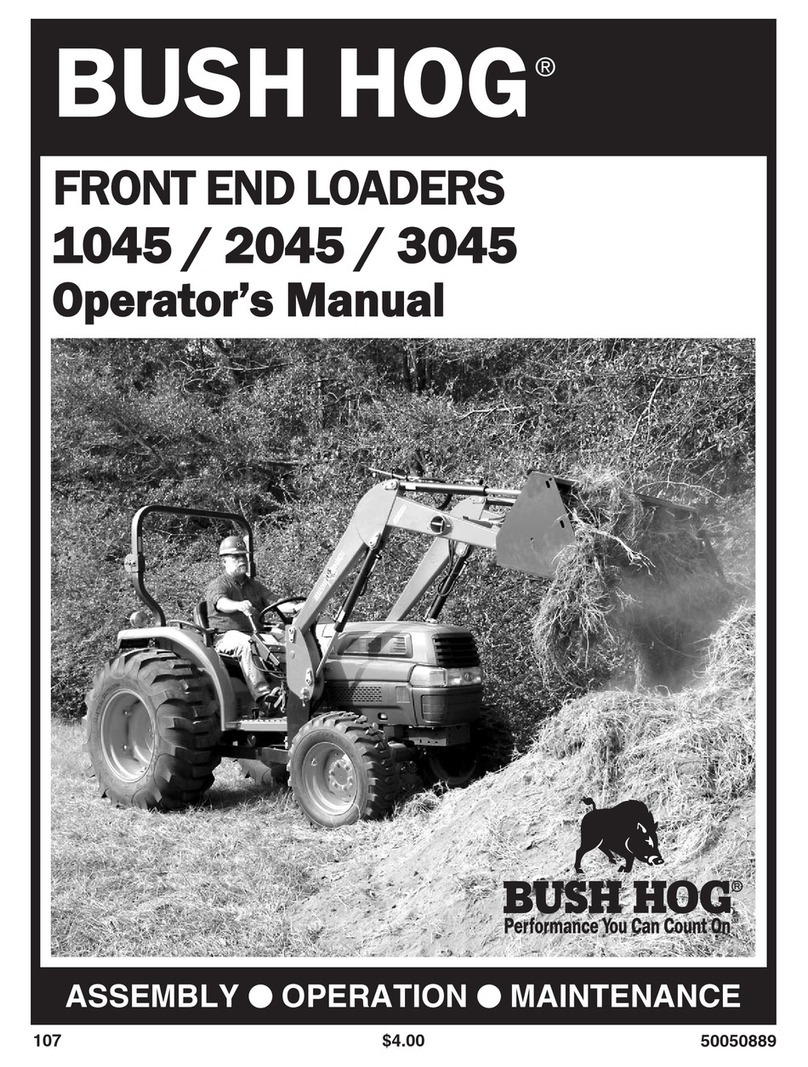STS DTP05 User manual

1 Operating Instructions: DTP05(-Ex)
Section I –Correct Use and Application ............................................................................................2
General ................................................................................................................................................................................2
Foreseeable Misuse of the Unit...........................................................................................................................................2
Approved Application Conditions.....................................................................................................................................2
Proprietor Responsibilities .................................................................................................................................................... 3
Adding Attachments and/or Accessories......................................................................................................................... 3
Safety Regulations for the Operation of the Unit ..............................................................................................................3
Consumables and Parts...................................................................................................................................................... 5
ATEX Certified Units (if applicable).....................................................................................................................................5
Lifting the Unit ......................................................................................................................................................................6
Unit Overview.......................................................................................................................................................................7
Section II –Unit Description .................................................................................................................8
Section III –Unit Operation .................................................................................................................. 9
Initial Setup and Connecting to Drums..............................................................................................................................9
Removing Drums from a Pallet ......................................................................................................................................... 10
Universal Drum Catch Variations......................................................................................................................................11
Top Hook Forward Reach Configuration Table...............................................................................................................11
Section IV –Unit Maintenance, Troubleshooting and Consumables ...........................................12
Maintenance Checklist..................................................................................................................................................... 12
Troubleshooting ................................................................................................................................................................. 13
Consumables.....................................................................................................................................................................13
Polycarbonate Guarding Replacement .................................................................................................................... 13
Oil Replacement........................................................................................................................................................... 14
Touch Up Paint..............................................................................................................................................................14
Wheel Replacement ....................................................................................................................................................15
Section V - Technical Specification.................................................................................................. 16
General Arrangement ......................................................................................................................................................16
Section VI - Decommissioning the Unit ............................................................................................17
Prior to Decommissioning.................................................................................................................................................. 17
Final Decommissioning and Disposal ...............................................................................................................................17
Recommissioning...............................................................................................................................................................17
Safety Tests to be Performed at Intervals and After Unusual Incidents. ........................................................................17

2 Operating Instructions: DTP05(-Ex)
Section I –Correct Use and Application
General
The unit described in the present operating instructions must be used, operated and
serviced in accordance with the present instructions. Any other type of use is beyond
the scope of application and can result in damage or injury to personnel, the unit or
property. The unit described in the present operating instructions complies with BS EN ISO
17050-1:2010 and the EC Machinery Directive 2006/42/EC.
Foreseeable Misuse of the Unit
Personnel must take care when operating the unit. The following actions must be
adhered to:
•The maximum safe working load (SWL) must not be exceeded.
•Do not travel with a raised load 500mm above the ground unless necessary.
•When manoeuvring the unit, do not exceed a speed of 1m/s (3.6km/h).
•When manoeuvring a raised load above 500mm, do not exceed a speed of
0.1m/s (0.36km/h).
•If applicable, do not over lower the head of the unit onto a platform, such as
a mezzanine floor.
•Do not carry or lift other personnel.
•Do not stand or ride on the unit.
•Loads must be undamaged.
•Do not negotiate inclines unless otherwise stated.
•Do not stand underneath a raised load or within the confines of the unit
during operation.
•The load must be lifted and/or mixed by the attachment provided.
•Do not alter the unit specification from original supply.
•Do not disable, remove or adjust safety mechanisms or switches.
•Observe all instruction decals applied to the unit.
•Do not leave the unit in direct sunlight.
•The manufacturer shall not be held liable in case of faults or accidents due to
negligence, incapacity, installation by unqualified personnel or improper use.
Approved Application Conditions
•Operation in dry industrial and commercial environments.
•Permissible temperature range 5°C to 40°C.
•Lighting of at least 300 Lux.
•Altitudes not exceeding 2000m.
•Operation only on secure, level surfaces with sufficient capacity.
•Operation only on routes that are visible and approved by the proprietor.
•Operation in accordance with guidance stated within the operating
instructions.
•The unit must be maintained in accordance with the maintenance schedule
stated within the operating instructions.
•Appropriate personal protective equipment, PPE, must be worn at all times.

3 Operating Instructions: DTP05(-Ex)
Proprietor Responsibilities
For the purposes of the present operating instructions the “proprietor” is defined as any
natural or legal person who either uses the unit themselves, or on whose behalf it is used.
In special cases (e.g. leasing or renting) the proprietor is considered the person who, in
accordance with existing contractual agreements between the owner and user of the
unit, is charged with operational duties. The proprietor must ensure that the unit is used
only for the purpose for which it is intended and that there is no danger to life or limb of
the user and third parties. Furthermore, accident prevention regulations, safety
regulations and operating, maintenance and repair guidelines must be followed. The
proprietor must ensure that all users have read and understood these operating
instructions. The proprietor must perform an onsite risk assessment before the unit is put in
to service.
IMPORTANT
Failure to comply with the operating instructions shall invalidate the warranty. The same
applies if improper work is carried out on the unit by the proprietor or third parties
without the permission of the manufacturer.
Adding Attachments and/or Accessories
The mounting or installation of additional equipment which affects or enhances the
performance of the unit requires written permission of the manufacturer. Local authority
approval may also need to be obtained. Local authority approval does not however
constitute the manufacturer’s approval. An onsite risk assessment must then be carried
out.
WARNING - ANY UNAUTHORISED MODIFICATIONS OR ADDITIONS TO THE UNIT SHALL
INVALIDATE THE WARRANTY AND STS SHALL NOT BE LIABLE.
Safety Regulations for the Operation of the Unit
Operator authorisation
The unit may only be used by suitably trained personnel, who have demonstrated to the
proprietor, or their representative that they can operate the unit safely and in
accordance with the operating instructions.
Operators rights, obligations and responsibilities
The operator must be informed of their duties and responsibilities and be instructed in
the operation of the unit and shall be familiar with the operating instructions. Operators
must be provided the appropriate PPE as mentioned in the ‘Approved Application
Conditions’ section of this manual.
Unauthorised use of unit
The operator is responsible for the unit during the time it is in use. The operator must
prevent unauthorised persons from operating the unit.
Damage and faults
The proprietor must be immediately informed of any damage or faults to the unit or
attachment. Units which are unsafe for operation must be quarantined until faults have
been rectified and the unit deemed safe for operation.

4 Operating Instructions: DTP05(-Ex)
Servicing and repairs
All unit parts and consumables are available from STS. The unit must be fitted with
original STS parts and consumables unless otherwise stated. Any deviation from non -
original parts and consumables may result in injury to personnel or damage to the unit
and will invalidate the warranty. The operator must never disable, remove or adjust
safety mechanisms or switches. The unit should only be serviced and repaired by a
competent individual as selected by the company the equipment is intended for use
with.
Safety devices and warning decals
Safety devices, warning decals and warning instructions in the operating instructions
and on the unit must be strictly observed.
Travel routes and operational areas
Only use lanes and routes specifically designated for unit traffic. Unauthorised third
parties must stay away from operational areas. The unit must only be operated in
operational areas with sufficient lighting to avoid damage or injury to personnel, the unit
or property. Additional equipment is necessary to operate the unit in areas of insufficient
lighting.
Hazardous area of the unit
The hazardous area is defined as the area in which a person is at risk due to the unit itself
or movement of the unit and/or load. This also includes areas which can be reached by
falling loads. The operator must:
•Instruct unauthorised personnel to leave the hazardous area.
•Give a warning signal with plenty of time for personnel to leave.
•Stop all operations if unauthorised personnel are within or enter the hazardous
area.
Travel conduct
The operator must adapt the travel speed to local conditions. The unit must be driven at
slow speed when negotiating bends or narrow passageways, when passing through
swing doors and at blind spots. Abrupt stopping (except in emergencies), rapid U turns
and overtaking at dangerous or blind spots are not permitted. When not in use, the
equipment should be parked in a safe location with the brakes engaged.
Travel visibility
The operator must look in the direction of travel and must always have a clear view of
the route ahead. When transporting loads that affect visibility, a second person must
safely assist the operator to observe the travel route.
Type of loads
The operator must make sure that the load is in a satisfactory condition. Loads must
always be positioned safely and carefully. Use suitable precautions to prevent parts of
the load and/or their contents from falling or spilling.
Cleaning
Cleaning of the unit depends on the environment that the unit is used in. It is
recommended that the unit be cleaned daily if the unit comes into contact with
aggressive substances such as chemicals, fertilizers, salt, etc. It is recommended to use
detergent and a damp cloth to clean the body of the unit. Do not use flammable liquids
to clean the unit. Do not clean the unit with pressurised water. If the unit is rated for ATEX
environments, the unit must be kept clean and dust free.

5 Operating Instructions: DTP05(-Ex)
Personal protective equipment (PPE)
PPE must be worn at all times. A minimum of safety shoes must be worn while operating
the unit. Safety shoes, safety glasses, protective gloves, hearing protection and
protective overalls are to be worn when carrying out servicing, repairs and
maintenance. When operating overhead loads, a hard hat must be worn. End user
health and safety procedures and best practices should be followed in addition to the
above recommendations.
Consumables and Parts
Environmental hazards
Parts and oils must be disposed of in accordance with the relevant environmental
protection regulations.
Hydraulic hoses (if applicable)
Brittle hydraulic hose lines cause accidents. Hairline cracks in the hydraulic lines can
cause injury and infection. The hydraulic hoses should only be serviced or replaced by a
competent individual as selected by the company the equipment is intended for use
with. It is the responsibility of the proprietor to maintain the hydraulic hoses.
Lift chains (if applicable)
Incorrectly cleaned chains can cause accidents. Lift chains are safety-critical parts.
They must not contain any serious contamination. Lift chains and pivot pins must always
be clean. Never clean chains with high pressure steam jet cleaners, cold or chemical
cleaning agents. It is recommended to clean the chains and pivot pins in an unloaded
state with a citrus cleaner to remove dirt and grime followed by the application of a
PTFE based industrial grade chain lubrication spray or food grade lubrication spray.
NOTE:
For more consumable information refer to ‘Section IV – Unit Maintenance,
Troubleshooting and Consumables’.
ATEX Certified Units (if applicable)
Operational hazards
Processing of liquids or suspensions (mixing or stirring, filling or draining) can give r ise to
ignition risks due to static electricity including the risk of propagating brush discharges.
The processing of liquids or suspensions is the responsibility of the end user.
Environmental hazards
Care should be taken by the end user to ensure collisions do not occur between the unit
and its surrounding environments which may create a potential ignition source.
Earthing chains
Ensure earthing chains are securely fitted and are in contact with the ground at all
times, wheels should be kept clean and free from debris.

6 Operating Instructions: DTP05(-Ex)
Lifting the Unit
Lifting the unit safely
In order to raise the unit safely, including off a pallet, proceed as follows:
•The unit must be on a level surface to prevent it from moving accidently.
•The lifting gear must only be secured to the points designated for this
purpose.
•Always use lifting gear with sufficient capacity.
•The unit should only be handled by qualified personnel who are trained in
using lifting slings and tools.
•Do not walk into or stand under a raised unit.
•If necessary, secure the unit with guide ropes to aid when lifting the unit.
Jacking the unit safely
In order to jack up the unit safely, proceed as follows:
•The unit must be on a level surface to prevent it from moving accidently.
•Always use a jack with sufficient capacity.
•The unit should only be handled by qualified personnel who are trained in
using lifting slings and tools.
•When jacking up the unit, take appropriate measures to prevent it from
moving, slipping or tipping over (e.g. wedges, wooden blocks, strops)
WARNING - IMPROPER LIFTING CAN RESULT IN SERIOUS ACCIDENTS
Securing the unit for transport
In order to transport the unit safely, proceed as follows:
•The unit must be securely fastened when transported on a lorry/trailer.
•The lorry/trailer must have fastening rings.
•Use wedges to prevent the unit from moving.
•Use only tension belts or tie-down straps with sufficient strength.
WARNING - IMPROPER FASTENING OF THE UNIT DURING TRANSPORT CAN RESULT IN
SERIOUS ACCIDENTS
IMPORTANT
After use, remove supplied lifting strop(s) and/or dee shackles and dispose.

7 Operating Instructions: DTP05(-Ex)
Unit Overview
DTP04(-Ex) AND DTP05(-Ex) UNITS
No.
Function
1
Steering/Pump Handle
2
Rack
3
Drum Catch
4
Real Wheel with Brake (x2)
5
Front Wheel (x2)
6
Thrust Pad
7
Lowering Valve
8
Polycarbonate Guard
1
1
2
2
4
4
5
5
3
3
6
6
7
7
Note: Generic units
shown
8
8
LIFTING STROP
THROUGH HOLE
LIFTING STROP POINT
(BOTH SIDES)

8 Operating Instructions: DTP05(-Ex)
Section II –Unit Description
The drum depalletiser is designed for lifting, lowering and transporting drums around the
workplace as well as on and off of pallets. The instructions in this manual should be adhered
to at all times, failure to do so could result in minor or serious injury to the operator and/or
other personnel.
The unit incorporates enclosed, smooth geometry with rounded edges to ensure safe
handling of the unit. The unit is fitted with a fully enclosed ram which is operated from the
rear of the unit to keep operator’s limbs away from dangerous machinery movement.
THE SAFE WORKING LOAD (SWL) OF THIS UNIT IS 350KG
THIS UNIT IS DESIGNED FOR USE ON FLAT AND LEVEL FLOORS ONLY
ATEX CERTIFICATION
If the equipment supplied has (-Ex) in the product code, it has been certified by STS for use in
Zone 1, 2, 21 and 22 areas for protection under constructional safety “c” and control of
ignition source “b”.
II 2 G D
Ex cb IIB T4 Gb
Ex cb IIIB T135°C Db
IMPORTANT
Consideration must be taken by the end user to ensure safety and conformity within ATEX
zones between the unit and its surrounding environment including any interfaces which may
occur.

9 Operating Instructions: DTP05(-Ex)
Section III –Unit Operation
IMPORTANT
Before using this unit, operators must read and understand this instruction manual. Failure to
observe the instructions in this manual will invalidate the warranty.
NOTE: Personal Protective Equipment (PPE) must be worn at all times, see ‘Section I – Correct
Use and Application’ for more information.
Initial Setup and Connecting to Drums
Each depalletiser is fitted with a universal drum catch which is adjustable in both height
(vertical) and reach (horizontal). This unique adjustability means that each lifter can handle a
wide variety of drum types and sizes commonly found in the workplace.
•Ensure the rack is lowered fully so that all the vertical lift stroke is available; this is done by
turning the lowering lever anticlockwise.
WARNING –DO NOT ROTATE THE LOWERING LEVER CLOCKWISE AS THIS MAY DAMAGE THE
UNIT.
•There are multiple rungs to which the drum catch can be secured, removing the lowest
pin allows removal of the catch from the rack. It can then be relocated and the pin
reinserted on a rung so that the catch is positioned below the lip of the drum.
•Manoeuvre the depalletiser using the handle, being sure to keep good posture.
Operators should move gently while manoeuvring, whilst planning ahead in good time.
Ensure that when not in use, the unit is parked on flat and level ground with the brakes
engaged.
•Line up the lifter with the centreline of the drum.

10 Operating Instructions: DTP05(-Ex)
•Lift the rack by operating the pump handle so that the catch rises above the top lip of
the drum.
•Push the unit forward so that the top hook engages the drum.
•Lower the rack slowly by turning the lowering lever anti-clockwise ensuring that the top
hook engages over the top lip of the drum and that the bottom toggle secures beneath
the drum lip.
•The drum is now ready to be lifted.
Removing Drums from a Pallet
•Pump the hydraulic handle to raise the drum to the desired height.
•Remove drum from the pallet by slowly pulling the depalletiser away.
•When clear of the pallet and transporting the drum, keep the drum as low to the ground
as is practical for transport.
•To place the drum down, simply turn the lowering lever anticlockwise. The rate at which
the drum lowers is controlled by the amount that the lever is rotated.
•Once the drum is placed on the floor, or another pallet, continue to lower the rack until
the catch goes slack, the operator can then reach forward and manually remove the
top hook from the drum.
•If the catch is lowered too far; it will be not possible to unhook from the drum. In this
instance raise the rack slightly by pumping the handle, the catch will then go slack and
the top hook will be able to be unhooked.

11 Operating Instructions: DTP05(-Ex)
Universal Drum Catch Variations
WARNING –DUE TO VARIATIONS IN THE MANUFACTURE OF DRUMS IT IS IMPORTANT THAT THE
CORRECT HOOK POSITION IS SELECTED. FAILURE TO DO SO COULD RESULT IN THE CATCH
DISCONNECTING FROM THE DRUM.
The universal drum catch has been designed so that a variety of
positions can be used to fit different sized drums. Changing the
hole that the top catch is located in increases the reach by a
further 10mm by each hole placement. The top hook must always
be placed in the shortest possible position. By removing the top
pin, the top hook can be turned over so that the sticker is upside
down. This gives the top hook a further 5mm of reach. Ensure that
the pin is reinserted and secured before lifting. If required, the
retractable support pad can be folded out to keep a drum in a
more vertical orientation.
The following hole positions are for guidance only, every drum should be assessed individually
and engaged with by following the instructions provided.
Top Hook Forward Reach Configuration Table
Catch (Original)
Catch (Flipped)
Back hole (4th)
0mm
+5mm
3rd hole
+10mm
+15mm
2nd hole
+20mm
+25mm
Front hole (1st)
+30mm
+35mm

12 Operating Instructions: DTP05(-Ex)
Section IV –Unit Maintenance, Troubleshooting and Consumables
Maintenance Checklist
The following servicing checklist indicates the operations to be performed and the respective
intervals to be observed. Maintenance intervals are defined as:
W = Every 50 service hours, at least weekly
A = Every 1000 service hours, at least annually
● = Standard maintenance interval
During the run-in period –after approx. 100 service hours –the owner must check the wheel
nuts/bolts and re-tighten if necessary.
NOTE: Personal Protective Equipment (PPE) must be worn at all times, see ‘SECTION 1 – Correct
Use and Application’ for more information.
NOTE: Maintenance must only be performed by a suitably competent individual as decided
by the company the equipment is intended for use with. All electrical maintenance must only
be performed by qualified personnel.
Weekly
Annually
Brakes and Toggle
Test brakes and adjust if applicable/necessary
●
●
Check side-shift toggle grips cross beam (DTP04 only)
●
●
Chassis and Superstructure
Inspect labels are legible and complete
●
●
Inspect all components for wear and damage
●
Check chassis and fixing connections for damage
●
Check guarding for damage and visibility, replace if
necessary (see ‘Consumables’ for instructions)
●
●
If the unit is ATEX rated ensure that the earthing chains are in
contact with the floor and that the wheels are clean and free
from dirt and grime
●
●
Check unit for any damaged painted surfaces, touch up, if
necessary, with approved touch up paint
●
●
Hydraulic Operations
Test hydraulic lift and lower function for correct operation
●
●
Check hydraulic oil level via sight glass, top up if below half
sight glass
●
Inspect hydraulic seals for damage and leaks
●
Replace hydraulic oil (see ‘Consumables’ for instructions)
●
Check hydraulic oil for condensed water, replace if necessary
(see ‘Consumables’ for oil type and instructions)
●

13 Operating Instructions: DTP05(-Ex)
Troubleshooting
When trying to locate a fault, proceed in the order shown in the table.
NOTE: Troubleshooting must only be performed by a suitably competent individual as decided
by the company the equipment is intended for use with.
If, after carrying out the following remedial actions, the unit cannot be restored to operation,
contact the manufacturer’s technical helpline. In order for customer services to react quickly
and specifically to the fault, the following information is essential:
-Unit serial number
-Description of error
-Unit product name
-Current location / Company
Consumables
All unit consumables are available from STS. The unit must be fitted with original STS
consumables unless otherwise stated. Any deviation from non-original consumables may
result in injury to personnel or damage to the unit and will invalidate the warranty.
Polycarbonate Guarding Replacement
The polycarbonate guarding should be replaced if damaged, cracked or visibility is
reduced. These are available from STS.
To replace the polycarbonate guard, isolate the unit in a safe area, then proceed as follows:
•Remove the four rivets located in each corner and remove the old guard.
•On the new polycarbonate guard, peel back the protective film along all long
edges.
•Position the new polycarbonate guard so that it fits inside the four tabs and use the
existing holes to drill through with a 6mm drill bit.
•Reinsert the screw rivets to secure the new polycarbonate guard in place.
Fault
Reason/Action
Unit does not lift
Unit overloaded, note safe working load of unit
Unit does not lift to full stroke
Pump is short of oil. Ensure rod is at bottom of stroke
and top-up/refill with hydraulic oil. Shell Tellus 22 or
equivalent, half sight glass
Oil leaking from top of hydraulic
cylinder, around chromed rod
Replace hydraulic cylinder seals
Oil leaking from tank filler point
Filler bung damaged or unit over filled with oil
Drum lowering unintentionally
Ensure lowering lever is in the closed position

14 Operating Instructions: DTP05(-Ex)
Oil Replacement
STS manual pump units are factory-equipped with Shell Tellus 22 oil for the hydraulic system. It
is recommended to use as stated or an equivalent when replacing hydraulic oil.
When replacing oil, fill oil to the line or to the middle of the sight glass. Operate all unit
functions to their full extents. Return unit head to its lowest position and recheck the oil level,
top up if required.
Touch Up Paint
Approved touch up paint should be used on any damaged painted surfaces, the surface
should be rust free before painting with a non-aluminium based paint. STS use RAL 5010 for
their blue paint.
Note: Pump and
tank size may vary
Hydraulic oil
filling point

15 Operating Instructions: DTP05(-Ex)
Wheel Replacement
Wheels should be replaced if damaged, cracked or delaminated. These are available from
STS.
For safety instructions refer to ‘Lifting the Unit’ in ‘Section I – Correct Use and Application’
To replace the front wheels, jack up the leg or front of the unit for DTP08 models by 10mm so
that one wheel is clear of the floor. Unbolt the wheel and remove it from the unit. Replace
the wheel ensuring that the wheel bushes are re-fitted into the wheel prior to re-bolting.
Repeat this process for the other leg or side. If removing the front castor for DTP08 models as
well as the wheel, the unit will need to be jacked up high enough to allow the castor to be
removed from underneath the lifter body. When low level legs are fitted with pallet roller
wheels, the 20mm diameter wheel pin will need to be removed. To do this, remove the
button head bolt and hammer out the pin.
Use the same procedure as previously mentioned to replace the rear castors, ensuring that
the wheel bushes are re-fitted in the wheel prior to re-bolting. For DTP08 models, the rear
wheel used for steering will need to be jacked up high enough to allow it to be removed
from the castor.
WARNING –DO NOT JACK THE UNIT MORE THAN NECESSARY AS UNIT MAY BECOME UNSTABLE
Wheel Bush
Note: Generic units
shown
Wheel Bush

16 Operating Instructions: DTP05(-Ex)
Section V - Technical Specification
General Arrangement
NOTE: ALL DIMENSIONS +/- 5MM.
Designation
Description
Dimension (mm)
A
Straddle
980
B
Maximum width
1190
C
Maximum height
1448
D
Clearance
172
E
Handle height (centre of stroke)
1154
F
Unit length
840
G
Distance under 205L drum
370
SWL
350kg
Net Mass
96kg

17 Operating Instructions: DTP05(-Ex)
Section VI - Decommissioning the Unit
If the unit is to be out of service for more than a month, e.g. for commercial reasons, it must
be stored in a frost-free and dry room. All necessary measures must be taken before, during
and after decommissioning as described hereafter. Decommissioning and recommissioning
must only be performed by a suitably competent individual as decided by the company the
equipment is intended for use with.
NOTE: Personal Protective Equipment (PPE) must be worn at all times, see ‘Section I –Correct
Use and Application’ for more information.
Prior to Decommissioning
•Thoroughly clean the unit.
•Test the brakes (if applicable).
•Check the hydraulic oil and replenish if necessary (if applicable).
•Fully charge then disconnect the battery. Charge the battery every 2 months to
protect from long term “non-use” damage (if applicable).
•Apply a thin layer of oil or grease to any non-painted mechanical components.
Final Decommissioning and Disposal
Final decommissioning or disposal of the unit must be performed in accordance with the
regulations of the country of use. In particular, regulations governing the disposal of
batteries, fuels and electronic and electrical systems must be observed. The unit must only be
disassembled by trained personnel.
Recommissioning
•Reconnect the battery, first ensuring that the battery undamaged (if applicable).
•Follow the annual servicing check list located in ‘Maintenance Checklist’.
•Follow the pre-start checklist located in ‘Pre-start Inspections’.
Safety Tests to be Performed at Intervals and After Unusual Incidents.
Perform a safety check in accordance with national regulations. The unit must be inspected
at least annually or after any unusual event by a qualified inspector. The inspector shall
assess the condition of the unit from purely a safety viewpoint, without regard to operational
or economic circumstances.
For further help contact STS:
Technical Support Line: +44 (0) 1736 851050
In the interest of all concerned it is essential that equipment of our manufacture is
used only for the purposes for which it has been designed and it must be used in
accordance with the instructions which are supplied.
Other manuals for DTP05
1
This manual suits for next models
1
Table of contents
Other STS Front End Loader manuals

